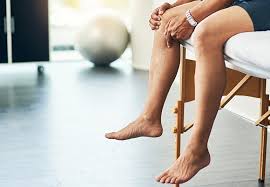Objective: The purpose of this article was to summarize the available evidence from systematic reviews on telerehabilitation in physical therapy.

Methods: We searched Medline/PubMed, EMBASE, and Cochrane Library databases. In addition, the records in PROSPERO and Epistemonikos and PEDro were consulted. Systematic reviews of different conditions, populations, and contexts—where the intervention to be evaluated is telerehabilitation by physical therapy—were included. The outcomes were clinical effectiveness depending on specific condition, functionality, quality of life, satisfaction, adherence, and safety. Data extraction and risk of bias assessment were carried out by a reviewer with non-independent verification by a second reviewer. The findings are reported qualitatively in the tables and figures.
Results: Fifty-three systematic reviews were included, of which 17 were assessed as having low risk of bias. Fifteen reviews were on cardiorespiratory rehabilitation, 14 on musculoskeletal conditions, and 13 on neurorehabilitation. The other 11 reviews addressed other types of conditions and rehabilitation. Thirteen reviews evaluated with low risk of bias showed results in favor of telerehabilitation versus in-person rehabilitation or no rehabilitation, while 17 reported no differences between the groups. Thirty-five reviews with unclear or high risk of bias showed mixed results.
Conclusions: Despite the contradictory results, telerehabilitation in physical therapy could be comparable with in-person rehabilitation or better than no rehabilitation for conditions such as osteoarthritis, low-back pain, hip and knee replacement, and multiple sclerosis and also in the context of cardiac and pulmonary rehabilitation. It is imperative to conduct better quality clinical trials and systematic reviews.
Impact: Providing the best available evidence on the effectiveness of telerehabilitation to professionals, mainly physical therapists, will impact the decision-making process and therefore yield better clinical outcomes for patients, both in these times of the COVID-19 pandemic and in the future. The identification of research gaps will also contribute to the generation of relevant and novel research questions.
Physical Therapy, Volume 101, Issue 6, June 2021
 Blog de Fisioterapia Fisioterapia
Blog de Fisioterapia Fisioterapia



